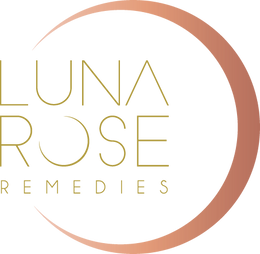Essential oils are powerful and potent substances. When the essential oil is extracted from the plant it is about 100 times more concentrated than it was in the plant.
With the Aromatherapy industry growing bigger and more popular every day, there is a lot of information out there - some good, some not so good, and some very dangerous! With over 400 hours of intense study and years of experience under my belt and have seen the not-so-nice side effects of using essential oils incorrectly!
While I will continue to be blown away by the healing powers of these wonderful plants, their properties are to be taken very seriously. Therefore, to be safe we must follow correct usage and blending recommendation.
Certified Aromatherapist in North America follow guidelines set by one or both awarding bodies - Canadian Federation of Aromatherapist, CFA or National Association of Holistic Aromatherapy, NAHA. I am a member of CFA and the safety advice I write in this blog post is in line with the guidelines they have set to follow.
Why Is Safety Important?
Essential oils very powerful and potent substances and a little really does go a long way. There are contra indications with each essential oil. A Certified Aromatherapist can explain these to you when discussing oils to use and recipes to blend. If contra indications are not checked then reactions can happen. Sensitisation being one of the most common results of incorrect or over use of an oil. Here are some terms you will see throughout Luna Rose Remedies resources and their meaning:
Photo sensititivty/photo toxic - This is when an oil has photo toxic properties making the skin more reactive to ultra violet light. Typical symptoms of photo sensitivity may include a pink or red skin rash with blotchy blisters, or raised spots on areas directly exposed to the sun. Itching and burning may occur and the rash may last for several days. Essential oils which are known to be photo sensitising are mostly citrus oils such as Lemon, Lime, Tangerine, Grapefruit, Orange and Bergamot. When using photo sensitising oil it is advised to wait a minimum of six hours before exposing skin to UV rays. For maximum protection, shield skin with sunscreen and protective clothing.
Toxicity - What we commonly call poisoning. Both dermal and oral toxicity depends largely on the amount of essential oil used, frequency its used and duration. Toxicity typically happens when an oil has been used incorrectly (in large doses or without a carrier oil) or if the essential oil has been ingested.
Typical signs and symptoms of dermal toxicity are headaches, minor skin eruptions, nausea, lethargy, local skin inflammation, itchiness, patches of dry scaly skin and/or burnt skin.
Typical signs and symptoms of oral toxicity are headache/migraine, stomach pains, vomiting with or without diarrhoea, heart palpitations, pain in lower abdomen and/oror low back (liver and kidneys), loss of appetite, dizziness, fainting, raised blood pressure and sezuire.
Safety Guidelines
Contra Indications - Each essential oil has its own contra indication or precaution. Be sure to obtain your oils from reliable sources who make contra indications known, or seek advice from a Certified Aromatherapist to be sure.
Never Ingest - I do not recommend or condone the internal use of essential oils. Many can be toxic when taken internally and can be extremely harsh to the digestive tract.
Always Dilute - always use a carrier oil with essential oils for topical use. Regular undiluted use may lead to sensitisation, skin irritation and burns. Never apply essential oils to broken or damaged skin, or around the eyes.
Pregnancy, Children, Elderly - I strongly recommend seeking advice from a Certified Aromatherapist before using essential oils on children or the elderly as they will have very different needs and restrictions. It is recommended that essential oils are not to be used on children under the age of 1 year old. In my opinion stick to using hydrosols until 3 years of age. There are a handful of oils which are safe to use at a very low dilution rate on children under the age of 10 years old.
There are many oils which are not recommended to use during Pregnancy and breastfeeding. Dilution rates will also need to be much lower - 1% is advised. See my post Pregnancy and the First Trimester for a list of oils that are to be avoided during pregnancy.
Oils go rancid - Each essential oil will have a shelf life. Some, like citrus oils, will have a shelf life of around 1-2 years. While other oils like Patchouli and Vetiver can last for 5-10 years. A lot will depend on how the oils are stored (I advice storing all essential oils in a cool, dark, dry place). Once an oil has oxidised the chemical components have began to break down which means they will not work in the same way and can cause reactions and irritation. Once an oil becomes rancid it should not be used for treatment purposes or diffusing. However there is no need to discard them, these oils are great to use for cleaning. Pop a few drops into your mop bucket and surface cleaner.
Useful Dilution Ratios
1% - Recommended dilution rate for the elderly, young children aged 3 years +, as well as pregnancy (2nd trimester on wards), breast feeding and facial skincare.
3% - is considered the maximum dilution rate for full body massage, as well as general bath and body care.
5% - is considered maximum adult dilution rate for local and/or acute application. If you plan to use a higher dilution rate, please seek guidance from a Certified Aromatherapist.
Feel free to use the dilution chart below as a resource. Simply click on the chart and print it off or download it to your device.

